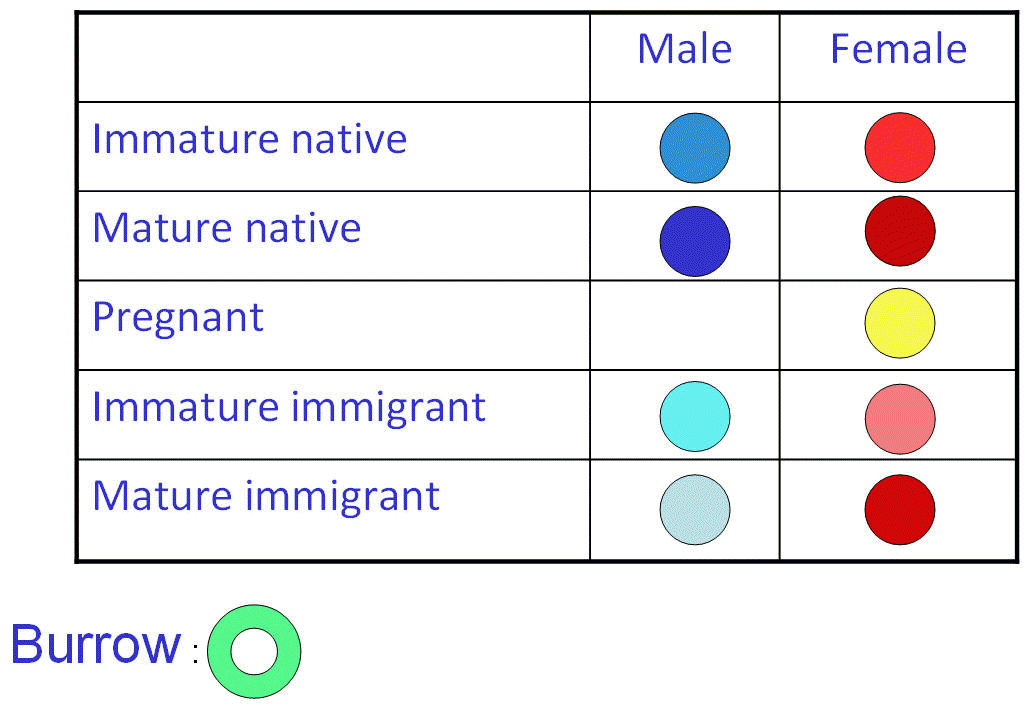2012
Deciphering the effect of colonial social behaviour on the colonization of a dynamic fragmented agricultural landscape.
|
|
2012 |
|
Two configurations are simulated (videos caption below):
1.- Population dynamics without burrowing / colonial behaviour
(10", 2.5Mb) - N0=1000, step: one day, length 18 months
Rodents are applying optimal foraging, they detect and move towards the fields with best resources. They mate as soon as they encounter a receptive relative.
2.- Population dynamics with burrowing / colonial behaviour
(36", 13.2Mb) - N0=3000, step: one day, length 11 years
Besides optimal foraging sex biased behaviour bound to colonial life within burrow systems is formalized: Males migrate continuously from colony to colony to reproduce. Females are kin clustered within colonies and disperse only for founding new colonies when competition for resource within their burrow system is too heavy.
In both cases, connectivity, fragmentation quality and variability of landscape will influence the success of foraging and mating encounters. This ecological context is superimposed to behavioural and social drives. It is expected to condition the colonization success and permanence of the rodent population within the agricultural landscape.
A) Biological features

B) Landscape features
- Fields state change seasonally: see the technical operation succession scheme:

- Crop rotation is decided yearly by mean of a transition matrix.
Modelling is realized in Java using the Repast Simphony platform.